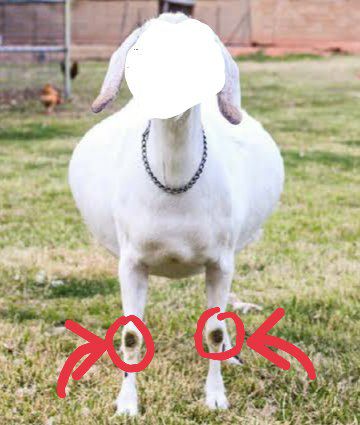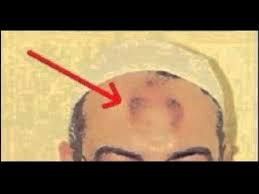🕯.. Abū Bakr bin Abī Shaybah (d. 235 Hijri) said:
🫧 3137 – Abu al Ahwas narrated to us, from Ash‘ath bin Abi al Sha‘thā’, from his father, he said: I was sitting with Ibn ‘Umar, and he saw a man whose face had a mark from prostration on it, so he said: «Indeed the image of a man is his face, so no one should disfigure their image». [Authentic chain]
🫧 3139 – ‘Umar bin Ayyūb narrated to us, from Ja‘far bin Burhān, from Yazīd bin al Asamm, he said: It was said to Maymūnah: Have you not seen so and so, they scrape their forehead on the earth wanting to get a mark of prostration on it? She responded: Leave him perhaps he yalhu. [Authentic chain]Her statement (May Allah be pleased with her) “Leave him perhaps he is yalhu” she said out of ridicule as if she was saying whoever scrapes will go inside.
🍃🍃🍃
And it has come from Ibn Abī ‘Āsim (d. 287 Hijri) in al Āhād wal Mathānī (2418), al Tabarānī (d. 360 Hijri) in al Kabīr (6685), and al Bayhaqī (d. 458 Hijri) in al Kubrā (3559) from the chain of:
🫧 Al Fadl bin Mūsā, al Ju‘ayd bin ‘Abdurrahmān reported to us, he said: We were with al Sā’ib bin Yazīd (May Allah be pleased with him) when al Zubayr bin Suhayl bin ‘Abdurrahmān bin ‘Awf came to him and on his face he had a mark of prostration. So when he stood up, he said: Who is this? It was said: al Zubayr bin Suhayl. He said: «Indeed this one has ruined his face, O yes by Allah, this is not the mark which Allah ﷻ named, and surely I have prayed on my face for eighty years and prostration did not leave a mark between my eyes».
🍃🍃🍃
And it came from Ahmad (d. 241 Hijri) in al Zuhd (747) from the chain of:
🫧 Thawr bin Yazīd, Abū ‘Awn al A‘war narrated to me, from Abī Idrīs al Khawlānī, he said: Indeed Abu al Dardā’ saw a woman who had between her eyes a mark from prostration similar to the marking of sheep, so he said: «If this had not been between your eyes that would have been better for you».
🍂🍂🍂
A person may say: Indeed this mark is not in the worshipper’s control?! #ƚԋҽ_αɳʂɯҽɾ:
Ibn Abi Shaybah reported in his Musannaf (3141) from the chain of:
🫧 Musāfir al Jassās, from Habīb bin Abī Thābit, he said: I complained to Mujāhid about the mark between my eyes, so he said to me: «When you prostrate then spread out».
🍂🍂🍂
#ʂҽƈƚισɳ
Allah’s ﷻ saying ﴾Their sign is in their faces from the effect of prostration﴿ [al Fath: 29]Al Tabarī said (d. 310 Hijri) in his Tafsīr (21/325) after mentioning a collection of narrations from the Salaf regarding the Tafsīr of this verse: The closest of sayings to what is correct regarding this is that it is said:“Allah Almighty told us that the characteristics of those people whose faces He described are from the effect of prostration, and Allah did not limit that to a time without a time, and since that was so, then that is at all times, and their sign by which they were known in this world was the mark of Islam, and that is their reverence (khushū’), guidance, asceticism and manner, and the effects of performing their obligatory and voluntary actions, and in the Hereafter what He told them they would be recognised by, and that is the whiteness of the face and of the hands and feet as a result of ablution, and the whiteness of the faces is from the effect of prostration.”And it was reported by al Bayhaqī in his al Sunan al Kubrā (3560) from the chain of:
🫧 Abu al Mansūr al ‘Abbās bin Fadl al Daby al Harawī, Ahmad bin Najdah narrated to us, Sa‘īd bin Mansūr narrated to us, Jarīr narrated to us, from Mansūr, he said: I said to Mujāhid ﴾Their sign is in their faces from the effect of prostration﴿ [al Fath: 29]Is that a mark due to prostration on the human face? So he said: “No, indeed one of them may have between his eyes the like of the knee of a goat, yet he is as Allah wills, meaning evil. Rather it is khushū’”.
🫧 And in another narration as came in Tafsīr Ibn Abī Hātim: Maybe it was present between the eyes of someone more hard hearted than Pharoah.


